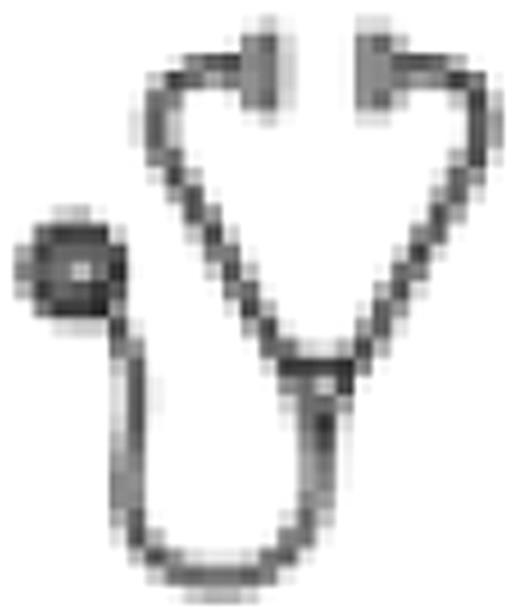Abstract
Abstract 906
Single-arm Phase 2 trials of DF in the treatment of severe VOD/MOF post-SCT demonstrated a complete response (CR) in 36–46% of patients (pts). A subsequent Phase 3 trial enrolling pts with more severe VOD (28%/24% with ventilator/dialysis dependence at study entry vs 5%/7%) demonstrated a CR of 24% compared to 9% in a matched Historical Control (HC); p=0.0148; Richardson ASH 2009). Given the life-threatening nature of VOD/MOF, DF was made available in the United States through a Treatment IND protocol (T-IND) in December 2007 to gather additional safety and response data.
Pts were required to have a diagnosis of VOD based upon Baltimore criteria (total bilirubin ≥ 2.0 mg/dL with ≥ 2 of the following: hepatomegaly, ascites or 5% weight gain) with MOF (either renal and/or pulmonary failure). Pts without a Baltimore diagnosis could enroll with biopsy-proven evidence of VOD. Eligibility criteria were expanded to permit patients with late onset VOD (VOD diagnosed after 21 days (d) or VOD/MOF after 28d post-SCT). Key exclusion criteria included clinically significant bleeding or need for >1 pressor to maintain BP. CR was defined as bilirubin < 2 mg/dL + resolution of MOF. Mortality was assessed at D+100. DF was given at 6.25 mg/kg IV q6h (25 mg/kg/d); treatment duration was recommended for at least 21d.
This interim analysis is based on 104 pts enrolled between14Dec2007-29Sep2009 and treated at 36 institutions. Most sites (n=23) enrolled only 1–2 pts. Nearly all pts (n=98) had undergone prior SCT; 6 had prior chemotherapy only; and 29 pts had late onset VOD post-SCT. Of the SCT pts, 69 pts enrolled in the T-IND met eligibility criteria for the original Phase 3 trial. Baseline demographics included median age 17 years (range 0.1 – 66); 59% male; and 16% with prior SCT. The most common diagnosis was leukemia (30% AML; 22% ALL; 7% other leukemia). The majority of pts had undergone allogeneic SCT (88%) with conditioning consisting of cyclophosphamide (76%), busulfan (42%) and/or TBI (41%). Mean onset of VOD post-SCT was 17 days. At entry, 20% of pts were dialysis dependent; 28% were ventilator dependent. Mean number of days of DF administration was 20 (range 2–88). Of the 104 pts, 36 (35%) achieved a CR by D+100. For the various sub-populations, the CR by D+100 rate was 24% for pts with late-onset VOD (n=29); 35% for those pts undergoing SCT (n=98); and 39% for the 69 pts who matched the entry criteria for the Phase 3 trial. Comparison of this group of 69 pts to the Phase 3 HC showed a statistically improved outcome (p=0.0007). Similar to the Phase 3 results, the CR rate was higher in pts who were not on dialysis/ventilator at study entry (41% vs 23%). Although children had previously been noted to have a higher CR rate in prior studies, the CR rate in the T-IND was similar in children compared to adults (35% and 34%, respectively). Overall D+100 mortality rate equaled 61% (n=104). Comparing the 69 pts who met Phase 3 entry criteria, D+100 mortality was 58% (p=0.0465 compared to the HC using Kaplan Meier estimates by log-rank analysis). Toxicity proved manageable: 11 pts experienced a total of 13 drug-related AEs including pulmonary hemorrhage (n=5), GI hemorrhage (n=3), hypotension (n=2), rectal hemorrhage, cerebral hemorrhage and pulmonary alveolar hemorrhage (1 pt each). Overall, 10% of pts experienced a drug-related toxicity that led to discontinuation. Similar to the observation of decreased GvHD in pediatric pts undergoing SCT who received prophylactic DF compared to best supportive care, the incidence of all grade GvHD was relatively low (8%).
In 104 pts with severe VOD/MOF enrolled at 36 US institutions, use of DF demonstrated a 35% CR by D+100. Comparing those pts who met criteria for the Phase 3 trial to the HC used in that study, D+100 CR and survival were significantly improved in this study population. DF-associated toxicities are consistent with prior studies. Following an amendment in 30Sep2009, entry criteria for the T-IND study were expanded to permit enrollment of pts without SCT (VOD post chemotherapy) as well as pts without MOF to evaluate earlier intervention. Analysis of this group will be performed separately. Enrollment into the T-IND study continues.
Richardson:Gentium: Membership on an entity's Board of Directors or advisory committees. Massaro:Gentium: Consultancy. Hannah:Gentium: Consultancy. Iacobelli:Gentium: Employment.

This icon denotes an abstract that is clinically relevant.
Author notes
Asterisk with author names denotes non-ASH members.

This feature is available to Subscribers Only
Sign In or Create an Account Close Modal